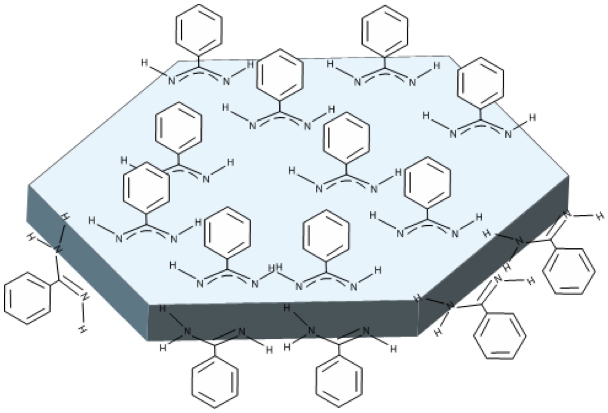Nanomaterials research is interested in colloidal semiconductor nanocrystals for their optoelectronic properties that strongly depend on their composition, size and morphology. In particular, colloidal nanoplatelets have recently emerged as a new class of quantum well nanomaterials with novel optical properties when compared to
quantum dots. However, the difficulty of synthesis and structural control of these nanocrystals remains a challenge.
In collaboration with the Institute of Physical Chemistry of the Polish Academy of Sciences at Warsaw, Poland, researchers at IRIG present a new approach to produce ZnO nanoplatelets with controlled thickness (from 3.2 to 7.5 nm) and durable colloidal stability. These Zn-based nanoplatelets are an attractive alternative, free of toxic heavy metals, to conventional cadmium chalcogenide-based colloidal 2D semiconductor nanostructures.
Beyond an original synthetic procedure, based on the controlled hydrolysis of organometallic complexes by H
2O, this work reveals the particular role of the chosen benzamidine ligands. Using
dynamic nuclear polarization-enhanced solid-state NMR, the researchers increased the intensity of the
15N NMR signals of the surface ligands without resorting to
15N isotopic enrichment. This approach allowed them to reveal the original role of the benzamidine ligands in stabilizing the surface of these nanomaterials, since they can bind to both polar (basal planes) and non-polar (lateral surfaces) facets of the nanocrystals. This bimodal stabilization, where the synthetic ligands behave as both
X- and L-type ligands, allows obtaining hexagonal nanoplatelets.
Further study of the interactions and arrangement of surface ligands is underway. This fundamental information on the organic-inorganic interfaces of ZnO nanoplatelets will facilitate the design of new stable and size-controlled colloidal suspensions.
 ZnO nanoplatelets and its organic–inorganic interfaces.
ZnO nanoplatelets and its organic–inorganic interfaces.
Optoelectronics is the study of electronic components that emit or interact with light.
Quantum dot: semiconductor nanoparticle with specific optical and electronic properties due to their nanometric size.
Dynamic Nuclear Polarization or DNP: the polarization of unpaired electrons is transferred to the nucleus in order to better observe the atoms by NMR. The sensitivity is improved to obtain information on the nature of the bonds at the interfaces, here between the nanoplatelets and the ligands.
X- or L-type ligand: X-ligand and the metal provides one electron each; L donates two electrons to the metal.